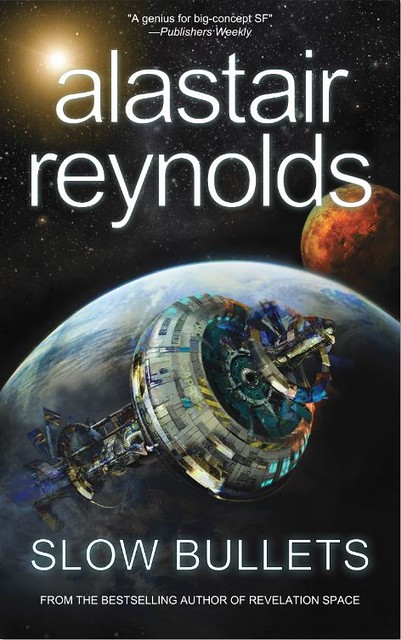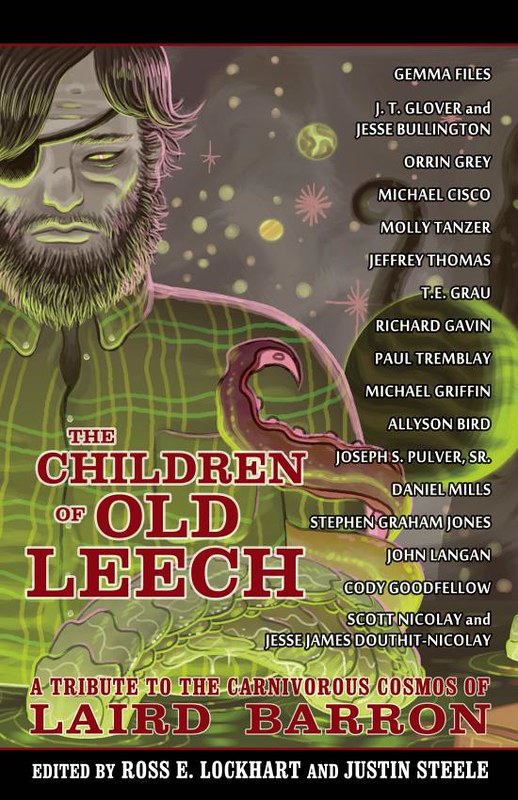 |
| Cover art by Liliana Sanches |
That's the size of the manuscript for "the best of" short story collection Led Astray by Kelley Armstrong, forthcoming in September from Tachyon Publications.
by Kelley Armstrong, forthcoming in September from Tachyon Publications.
Now, I haven't read a lot of Kelley Armstrong's fiction. Just a few stories, no novels. I'm not an "urban fantasy, werewolves-vampires-zombies" kind of guy. During my years working with Night Shade Books[1], I worked on a couple Kelley Armstrong stories: "Twilight" in By Blood We Live (2009) and "Last Stand" (also included in Led Astray) in The Living Dead 2 (2010), both anthologies edited by John Joseph Adams. And one other story, "A Haunted House of Her Own" in The Urban Fantasy Anthology, edited by Peter S. Beagle and Joe R. Lansdale, from Tachyon Publications (2011)[2].
To say I was surprised when I began working on the stories in Led Astray would be an understatement. I'm still not an "urban fantasy, werewolves-vampires-zombies" kind of guy, but I will definitely be reading more Kelley Armstrong stories in the future. What I discovered is that a number of the stories are written within Ms. Armstrong's existing series' universes -- actually only ten of the collection's twenty-three stories are "standalone"; all the rest fall within her existing series. So I would read a very cool story like "Learning Curve," and then six stories later I would encounter some of the same characters in "The List." The characters are so deftly written that when I came upon them again in another story it was like meeting up with old friends already.
One of my favorites, albeit a standalone story, is "Last Stand" -- unexpectedly, at least for me, a zombie story! It's a typical zombie story, in one sense: following a virus outbreak, soldiers in a fort must fight for their survival against the "Others." The well-drawn, strong female protagonist, Monica Roth, was a chemistry teacher before the outbreak, and now serves as commander, doing her best to keep the "last band of resistance fighters" alive. Here are a couple excerpts:
Before [Gareth] could say a word, she lifted her hand."Objection noted, Lieutenant.""I didn't say a word, Commander," he said."You don't need to. You heard we're bringing in a fresh lot, and you're going to tell me—again—that we can't handle more prisoners. The stockade is overcrowded. We're wasting manpower guarding them. We're wasting doctors caring for them. We should take them out into the field, kill them and leave the corpses on spikes for the Others to see.""I don't believe I've suggested that last part. Brilliant idea, though. I'll send a troop to find the wood for the poles—"She shot him a look. He only grinned.[. . .]The H5N3 virus had started in Indonesia, with sporadic outbreaks downplayed by authorities until they could announce a vaccine.Their salvation turned into their damnation. Some said the vaccine had been deliberately tampered with. Others blamed improper testing. They knew only that it didn't work.No, that wasn't true. If the goal was to ensure that people survived the flu, then it worked perfectly. People were vaccinated, they caught the virus, they died, and they rose again.Even before they rose, though, they'd carried a virus of their own, unknowingly spreading it through lovers, drug use, and blood donations. By the time officials realized the problem, a quarter of the population was infected. After the vaccinations stopped, another quarter died from the influenza itself. Both viruses continued to spread.That was the Great Divide. The human race sliced in two, one side fighting for supremacy, the other for survival.
How "Last Stand" differs from the typical zombie story is...well, let's just say if I tell you, then I will completely spoil the experience of reading this story. You're just going to have to trust me on this one: go order Led Astray: The Best of Kelley Armstrong from Amazon or wherever you prefer to purchase books, and read this story -- and the twenty-two others in the collection -- and be amazed. Of course, if you are already a fan of Ms. Armstrong's work then I'm not telling you anything you don't already know!
or wherever you prefer to purchase books, and read this story -- and the twenty-two others in the collection -- and be amazed. Of course, if you are already a fan of Ms. Armstrong's work then I'm not telling you anything you don't already know!
This is the table of contents as it appears in the manuscript, with the respective universes noted where applicable. Of the twenty-three included stories, two are original to this collection.
Rakshashi (standalone)
Kat (Darkest Powers universe)
A Haunted House of Her Own (standalone)
Learning Curve (Otherworld universe)
The Screams of Dragons (Cainsville universe)
The Kitsune's Nine Tales (Age of Legends universe)
Last Stand (standalone)
Bamboozled (Otherworld universe)
Branded (Otherworld universe)
The List (Otherworld universe)
Young Bloods (Otherworld universe)
The Door (standalone, original to this collection)
Dead Flowers by a Roadside (standalone)
Suffer the Children (standalone)
The Collector (standalone)
Gabriel's Gargoyles (Cainsville universe)
Harbinger (standalone)
V Plates (Otherworld universe)
Life Sentence (Otherworld universe)
Plan B (standalone)
The Hunt (Cainsville universe)
Dead to Me (standalone)
Devil May Care (Cainsville universe, original to this collection)
Seventeen of these stories have been reprinted from anthologies, so I suspect even avid readers of Kelly Armstrong's fiction will not have seen most, if not all, of these stories. So no need to purchase seventeen other volumes...you can read the best of Kelley Armstrong in Led Astray.
---------------
Footnotes
[1] You can read my diatribe "Doin' Hard Time at Night Shade Books," which includes a complete list of the more than 100 books I worked on during my time with the press.
[2] I just realized that I have now worked for Tachyon Publications for more years than I did Night Shade Books -- I believe my first project was in 2002; and considering it has all been contract work through the years, I have no complaints. The working relationship has been one of the best, and I hope it continues for many years to come. Led Astray is my most recent copy editing project; Slow Bullets by Alastair Reynolds was my most recent editorial project, which you can read about in detail here.


